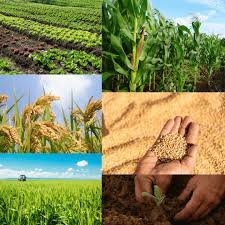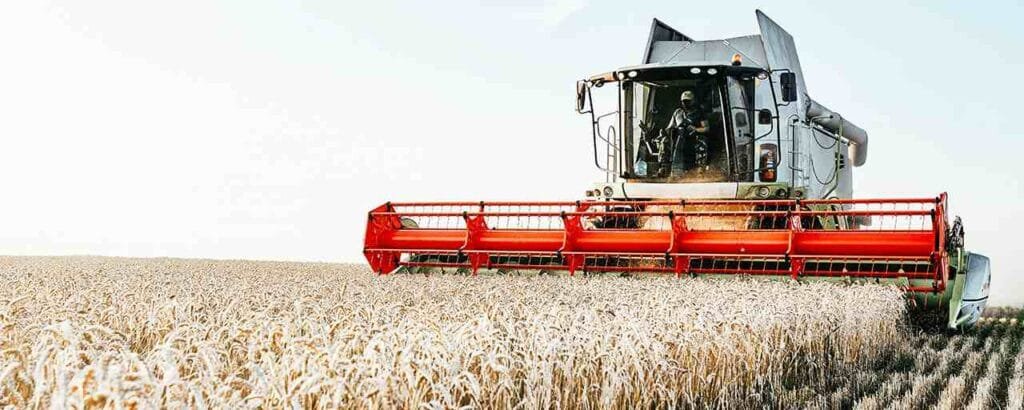INTRODUCTION TO RABI CROPS

Rabi crops are sown in the winter season and harvested in the spring. These crops are also called “winter crops” and typically require cooler climates for germination and growth but mature in relatively warmer spring weather. Common examples include wheat, barley, mustard, gram, and peas. Rabi cropping plays a significant role in food security and agricultural income, especially in countries like India, Nepal, and Pakistan. Understanding the correct production technology is crucial for maximizing yield, improving crop health, and ensuring sustainability.
Summary of Rabi Crops
- Rabi crops are winter-season crops sown between October and December and harvested in spring, depending on irrigation and cool temperatures for optimal growth.
- High-quality seeds, well-prepared soil, balanced fertilizers, proper pest and weed control, and efficient irrigation are key to achieving maximum productivity.
- Integrating precision farming, climate-smart methods, mechanization, crop rotation, and IPM empowers farmers to cut costs, enhance yields, and adapt to climate change.
Table of Contents
CHARACTERISTICS OF RABI CROPS
Rabi crops have several distinct features:
Sowing and Harvesting Period

- They are sown from October to December and harvested between March and April.
Climate Requirements
- Require a cool climate for growth and warm weather for maturity.
Water Requirements
- Depend mainly on irrigation rather than monsoon rains.
- Generally need less water compared to Kharif crops.
Sensitivity
- Susceptible to frost and low temperatures during germination.
MAJOR RABI CROPS
Wheat
Wheat is the most important staple Rabi crop, extensively cultivated across the plains. It requires well-drained loamy soil, a temperature range of 10-25°C, and around 75-100 cm rainfall.
Barley
Barley is a hardy crop, tolerant to poor soils and lower moisture. It is used for food, fodder, and brewing industries.
Mustard
Mustard is a key oilseed crop, grown for its seeds which yield edible oil. It thrives in well-drained loamy soil and requires cool weather.
Gram (Chickpea)
A major pulse crop rich in protein, gram grows well in black cotton or loamy soils and requires low input with good drought tolerance.
Peas
Green peas are consumed as fresh vegetables or dried pulses. They prefer cool climates and loamy soils.
LAND PREPARATION FOR RABI CROPS
Proper land preparation improves soil structure and root penetration, promoting healthier crops.
Ploughing
Land should be ploughed 2-3 times to a fine tilth to break soil clods and ensure good aeration.
Levelling
Levelling prevents waterlogging and ensures uniform irrigation.
Addition of Organic Matter
Adding compost or farmyard manure improves fertility, water retention, and microbial activity.
SEED SELECTION AND TREATMENT
Seed Selection
Use high-yielding, disease-resistant varieties suitable for local climatic conditions.
Seed Treatment
Treat seeds with fungicides like Thiram or Carbendazim to prevent fungal infections. Biofertilizer treatments (e.g., Rhizobium for pulses) enhance nutrient uptake.
SOWING METHODS
Broadcasting
Simple and low-cost method where seeds are scattered manually. Common in small-scale farming but leads to uneven plant spacing.
Line Sowing
Seeds are sown in rows using seed drills or by hand. It ensures better crop management, weeding, and nutrient application.
Drilling
Mechanical seed drills provide uniform seed depth and spacing, improving germination and yield.
Bed and Furrow System
This method is suitable for crops sensitive to waterlogging, as it helps with drainage and irrigation efficiency.
IRRIGATION MANAGEMENT
Importance
Since Rabi crops are grown during the dry season, timely irrigation is essential.
Methods
Flood Irrigation
Traditional method but can lead to water wastage.
Furrow Irrigation
Water flows through furrows between crop rows, reducing water use.
Drip Irrigation
Efficient method where water is delivered directly to root zones, ideal for mustard and vegetables.
Sprinkler Irrigation
Useful in undulating terrain and sandy soils; conserves water.
NUTRIENT MANAGEMENT
Fertilizer Application
Balanced use of nitrogen (N), phosphorus (P), and potassium (K) is necessary. For example, wheat requires 120:60:40 NPK kg/ha.
Micronutrients
Deficiencies of zinc, iron, and sulfur should be corrected through soil testing and supplementation.
ORGANIC FARMING PRACTICES
Use of compost, green manure, biofertilizers, and crop rotation enhances soil health and reduces chemical dependence.
WEED MANAGEMENT
Manual Weeding
Hand hoeing or using wheel hoes to remove weeds.
Chemical Weeding
Use of pre- and post-emergent herbicides like Pendimethalin or 2,4-D for broad-leaved weeds.
Biological Control
Use of insects or bio-agents that target specific weeds.
PEST AND DISEASE MANAGEMENT
Common Pests
- Aphids (mustard, peas)
- Stem borers (wheat, barley)
- Pod borers (gram)
Common Diseases
- Rust (wheat, barley)
- Powdery mildew (peas)
- Wilt (gram)
Integrated Pest Management (IPM)
Combines cultural, mechanical, biological, and chemical methods to control pests and diseases.
HARVESTING AND POST-HARVEST MANAGEMENT

Harvesting Time
Crops should be harvested at physiological maturity to avoid losses.
Threshing and Winnowing
Mechanical threshers and winnowers improve efficiency.
Storage
Crops should be properly dried and stored in moisture-free conditions using air-tight containers or granaries.
MARKETING AND ECONOMICS
Farmers should be aware of market trends, minimum support prices (MSP), and government procurement schemes. Value addition, such as mustard oil extraction or pulse processing, can enhance income.
MODERN TECHNOLOGIES IN RABI CROP PRODUCTION
Precision Farming
Use of GPS, sensors, and AI for accurate input management.
Climate-Smart Agriculture
Adopting drought-tolerant varieties, adjusting sowing dates, and improving soil health to cope with climate change.
Mechanization
Use of seed drills, harvesters, and sprayers for time and labor efficiency.
CONCLUSION
The production of Rabi crops is a crucial aspect of sustainable agriculture, particularly in regions where monsoon rainfall is uncertain or limited. By understanding and implementing proper land preparation, timely sowing methods, nutrient and irrigation management, as well as pest and weed control, farmers can enhance both yield and quality of Rabi crops. Emphasizing integrated farming practices and utilizing modern technologies like precision farming, climate-smart agriculture, and mechanization can lead to better resource efficiency and higher profitability.
Moreover, government support through minimum support prices (MSPs), subsidies, and extension services plays a significant role in encouraging farmers to adopt improved practices. Ultimately, a strategic approach to Rabi crop production not only boosts food security and farmer income but also ensures the long-term health of the agricultural ecosystem. As climate variability becomes more pronounced, investing in resilient and adaptive Rabi farming systems becomes essential for building a sustainable and productive future for agriculture.
Frequently Asked Questions (FAQs)
What defines a Rabi crop?
Rabi crops are grown during the winter season, usually sown between October and December, and harvested in spring from March to April. These crops need cool weather to grow and mainly depend on irrigation instead of rainfall. Common examples include wheat, barley, mustard, gram (chickpea), and peas.
When is the best time to sow Rabi crops?
The best time to sow Rabi crops is from the middle of October to the beginning of December. The exact timing depends on the type of crop, the amount of moisture in the soil, and the local weather. Sowing at the right time helps seeds grow evenly and ensures strong, healthy plants.
How should irrigation be managed for Rabi crops?
Rabi crops need regular irrigation since they are grown in the dry season. Farmers usually provide 3 to 6 irrigations during the crop cycle. Efficient methods like drip irrigation or sprinklers help keep the soil moist, especially during important growth stages, while also saving water.
Related Articles

